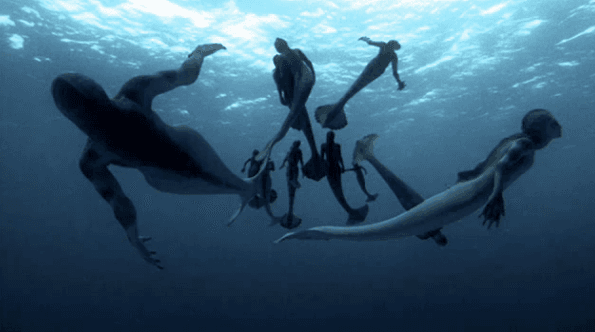‘Mermaids: The Body Found’ brings the legend back to life (VIDEO)
A screenshot of the preview for Mermaids: The Body Found, a look at the legend and possibility that mermaids could be real.
"Mermaids: The Body Found" took over the airwaves last weekend.
The Animal Planet mockumentary premiered on Sunday and had viewers asking, 'what if mermaids really are out there?'
The special, a part of Animal Planet's Monster Week, has drawn both praise and criticism for its realistic look at what could be lurking in the deep. The show featured several 'found footage' videos and interviews with people who claim to have seen mermaids first hand.
One of these videos claims that two boys found a mermaid on the beach in 2008:
While Animal Planet went for a creep, alien-like look for their merpeople, the mythical version of mermaids in folklore often held that mermaids were of superior beauty.
The first mermaid stories appeared in Assyria, around 1000 BC. According to the legend, the goddess Atargatis loved a mortal shepherd and unintentionally killed him. Shamed, she jumped into a lake to take the form of a fish, but the water could not conceal her divine beauty. According to Encyclopedia Britannica. Atargatis took the form of half-human, half-fish.
From here, the legend of the mermaid moved to a haunting image of sirens calling out for sailors in the sea.
"Usually these legends of singing sirens were made by sailors as explanations for why they were led astray," said Natalie Underberg, a folklorist at the University of Central Florida, told the Underwater Times.
Of course the stories also could have arisen from the active imaginations of explorers and their desperate need for human contact.
The Underwater Times noted that in 1493, while sailing near the Dominican Republic, Christopher Columbus described in his log some "female forms" that "rose high out of the sea, but were not as beautiful as they are represented."
They also noted English explorer John Smith claimed to have seen a mermaid in the Caribbean in 1614. He wrote, "Her long green hair imparted to her an original character by no means unattractive. Begun to experience the first effects of love."
However, Ariel, the red-headed innocent potrayed in Disney's adaptation of Hans Christian Andersen's fairy tale, "The Little Mermaid" may be everyone' overriding image of a sea siren.
In the ordinal version written in 1837, the little mermaid exchanges her fins for feet in order to obtain an eternal human soul. She trades her tongue for her new legs, and must find true love's kiss, otherwise she will die broken hearted and turn into sea foam.
She sadly does not win the prince's love in the original version and throws herself back into the ocean. However, because she worked so hard to earn a soul, she is granted one and becomes a 'daughter of the air'.
The mermaid legend has endured for thousands of years. Perhaps out of fantasy, or maybe( just maybe) Animal Planet is on to something.
